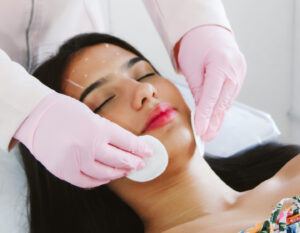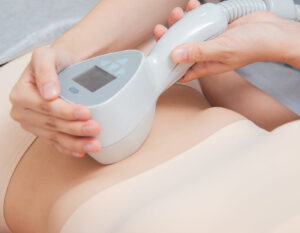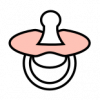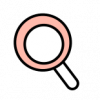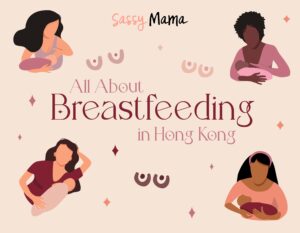
Here’s how to navigate your breastfeeding journey in Hong Kong.
Breastfeeding is the final part of a wonderful, exhausting, and life-changing maternal triathlon, yet while we tend to plan and research for stages one and two (pregnancy and labour), it’s easy to put off thinking about this last bit. It’s understandable, there are wonderful apps that help you navigate and understand your pregnancy, and there are an array of courses and books to help you plan your birth, but we tend to think of nursing as something that will just come to us naturally.
We’ve all seen the images of newborns feeding beautifully, held by calm mothers who seem to have showered and dressed (seriously, when do they find the time?!). Gorgeous shots, but probably some of the most misleading pictures of motherhood. Yes, breastfeeding can be magical and rewarding, but it can also be unexpectedly painful, tiring and time-consuming. Being natural does not make it easy; it’s a learned skill for both mama and baby. For the most part, we instinctively know what to do, but learning how to do it takes time, perseverance, confidence and, above all, help. As with any challenge, we have the best chance of success by being prepared before we undertake it, so read on for 10 steps on how to point yourself in the right direction.
Jump to:
Pregnancy Preparation
Hospitals And Paediatricians
Get A Boob Squad
Self-care And Self-belief
Survival Tools
Online Resources
Pumps And Bottles
Getting Outside
Returning To Work
Breastfeeding Older Babies
Read more: Where To Buy Nursing Bras In Hong Kong
Pregnancy Preparation
It’s fairly standard now to have a birth plan, but it is also good to have a dedicated breastfeeding plan. This shouldn’t be rigid or become a yardstick to measure success or failure, but simply a guide to help us, and the people around us, cope with the steep learning curve.
Breastfeeding has been hidden away in many modern societies, so the realities can come as a shock – not just for new mothers but for their partners, who may never have seen a woman nursing in the flesh. It’s helpful to set out and talk about hopes and expectations because, as with many parenting discussions, it is best not to wait till baby arrives to make sure everyone is on the same page.
A good time to start research is the second trimester (once most of the fatigue and nausea have passed, but before the discomfort of the last few months hits). There are some excellent books to read, but these three come highly recommended:
- The Breastfeeding Book: Everything You Need to Know About Nursing Your Child from Birth Through Weaning – Dr William Sear (available via Book Depository)
- Guide to Breastfeeding – Dr Jack Newman (available via Book Depository)
- The Womanly Art of Breastfeeding – La Leche League International
It might seem bizarre to read about nursing before delivery, but it’s helpful to become familiar with this brave new world in order to better cope with common issues such as tongue-tie, mastitis, and jaundice. Most antenatal classes cover breastfeeding in their range of topics, but La Leche League Hong Kong offers a dedicated Prenatal Breastfeeding Class that tackles core issues including good positioning, latch and how to know if the baby is full.
Editor’s note: Please note that this article contains some affiliate links to products and we may receive a commission for select purchases.
Hospitals And Paediatricians
Those giving birth in the public system will be allocated a hospital according to their residential area, but it still pays to do some research in advance on the breastfeeding policy. All government hospitals purport to support nursing, but the extent they do so varies, plus the attitudes of the duty team each day will impact things. Even if such variables are not in our control, if we set out what we want in writing and make it clear early on, it helps everyone in the sometimes chaotic hours after birth.
Mothers can make it clear that no artificial nipples, pacifiers, or formula should be given to baby unless medically required and agreed to by a parent. If formula is needed or it’s necessary to express milk instead of direct nursing, insist the staff cup or syringe feed newborns to help prevent nipple confusion. Queen Mary and Queen Elizabeth Hospitals are seen as two of the most supportive of breastfeeding in Hong Kong, having met government standards to be certified as “baby-friendly” facilities.
In the private sector, Matilda Hospital is regarded as the gold standard for breastfeeding support, but it is still helpful to provide both birth and breastfeeding plans. If medically possible, ensure the baby has skin-to-skin and nurses in the first “golden hour”, also make sure you request a visit from the hospital’s lactation consultant within the first 24 hours after birth. Make sure the baby stays close to aid frequent breastfeeding and to ensure staff follow the care requests set out.
Assessing weight gain in the days following discharge can be stressful, so it helps to see a doctor who understands the breastfed baby. Experienced mothers recommend Dr Mark Chan and Dr Kenneth KY Wong, who was previously the head paediatrician at Queen Mary Hospital, and is excellent with premature babies. Hong Kong family health centres are supportive of breastfeeding and offer a help hotline (2961 8868), and because they run the free vaccinations, many mothers have to visit anyway so it can be a useful place to check-in. As with most public health facilities, staff can be brusque and the views old-fashioned – many nurses still insist nursing should only take place in a dedicated room.
Get A Boob Squad
A problem shared is a problem halved – as they say – so assembling your boob squad will help you navigate the sometimes turbulent early days:
- Supportive partners: This could be hubby, grandma, a trusted mummy friend or a wonderful helper – but this core group should provide emotional, physical and nutritional support. This means making sure you’re getting water to drink and snacks to eat, holding the fort so mama can shower, swaddling, changing and rocking baby, or simply answering texts about “what’s normal” in the wee hours.
- Lactation consultants: It is worth saving for a private lactation consultant to do a home visit. Some health insurance covers this but if not, keep in mind that help from a qualified breastfeeding expert can mean saving money on formula, which costs thousands of dollars per month. Home visits are particularly good if you had a difficult birth and mobility is restricted, but also just as a sanity saver. The first days home from the hospital can also be terrifying so it can be lovely to have a calming influence that can advise how to latch on, advise creative positioning for mother and baby (options such as rugby hold, side-lying, or laid-back can be feeding game changers), check weight gain, and assess maternal well-being.
Yvonne Heavyside and her colleagues at Family Zone are beloved by generations of mothers in the city and offer home visits and follow up calls and texts. Hulda Thorey and the Annerley team (also a longtime favourite with mamas in Hong Kong) offer a similar deal. International Board of Lactation Consultant Examiners (IBCLC) qualified Ellen Cheung is gaining a cult following among younger mothers and is able to work in English and Cantonese. Mrs Chee, of Everdawn Midwifery (a stalwart of Hong Kong’s breastfeeding community), can help with everything from blocked ducts and breast massage to boosting supply. Based in Wan Chai, she is readily available via WhatsApp. You can also contact La Leche League. The Hong Kong chapter meets regularly (currently via Zoom due to social distancing measures*) and accredited leaders are contactable by phone or email if advice is needed quickly.
- Create your village: Breastfeeding evolved in a social setting, we were never meant to be doing it alone. Sadly, the matriarchal village has been lost and the modern world can leave new mothers feeling isolated. But there are ways to recreate a version that works for you. The online resources above should help with all the questions new mothers have, but it is also nice to feel there is a sisterhood to support you.
Gemma MacFarlane, the grand dame of Hong Kong’s nursing support groups, runs the hugely popular Hong Kong Breastfeeding (a women’s only group). You’ll find tried and tested recommendations from some 2,000-strong mothers, and she’s also set up mentor schemes and arranges regular breastfeeding support meetings in Central and Sai Kung. Other useful Facebook communities include:
Dr Jack Newman
Milk Meg
Breastfeeding Younger Babies and Beyond
For Cantonese speakers, there is also BreastFeeding.HK
- Playgroups: Seeing people in real life is also important. St John’s in Central and St Stephen’s in Stanley offer wonderful playgroups where new mothers can come along with their smalls. Both are great options to make those tentative steps back into the wider world. There’s plenty of women in similar situations and there’s a relaxed attitude to nursing that helps with confidence. It can be an ideal place to meet like-minded women to add to your boob squad. Alternatively, Annerley offers a well-baby clinic that can be quite social, and La Leche League meetings bring together a range of people and provide a good sounding board for any issues.*
*Editor’s Note: The situation in Hong Kong due to the coronavirus is constantly evolving and so restrictions may be in place for playgroups and visits to lactation consultants and hospiatls. Please make sure you follow the latest government advice on social distancing and stay home if you have recently travelled overseas, have interacted with anyone who has been away, or display any symptoms. Your family’s health is the top priority!
Read more: What To Eat While Nursing: A Nutritionist’s Guide To Gold Star Breastmilk
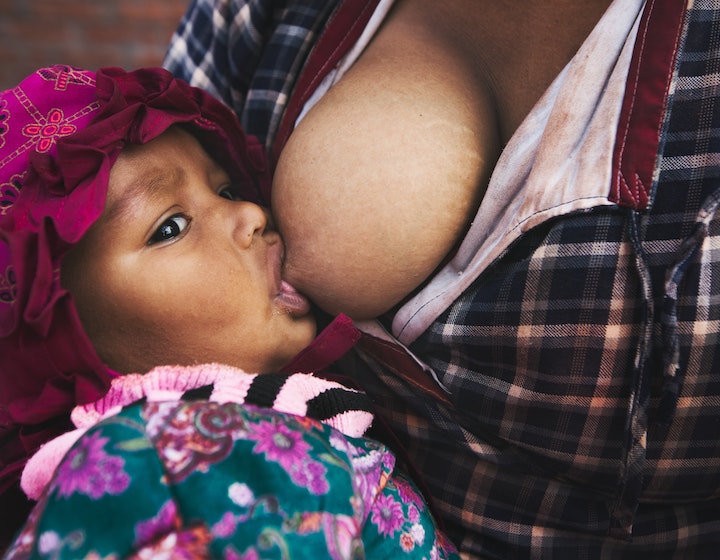
Self-care And Self-belief
In the early days, women often feel that all they do is nurse, fearing they’ve achieved nothing all day. Reframe thoughts of “endless breastfeeding” to “growing a human with a specially created super fuel” and appreciate the wonder of that achievement. Consider too, things from their perspective – mama is the only world they’ve ever known, so is it any wonder they want to be carried and held close while they acclimatise to this new one.
It’s an old adage but it’s true: The days are long but the years are short. Let the housework and life admin wait and just enjoy the newborn bubble. Why worry about getting back the pre-pregnancy body when the post-pregnancy body is doing incredible things. It is an intense period and it’s vital to accept help, where possible, and take time to rest, when possible. It’s also vital to remember that using formula is not failing, and many people do so and then go on to breastfeed successfully and extensively. Don’t be held hostage to a constructed idea of perfection as the nursing journey will have ups and downs, and requires flexibility. Choose what is right for both you and your baby and understand this may change often.
It’s normal for self-doubt to creep in and to worry about everything from whether the baby is getting enough milk, or gaining enough weight to why they feed so often, but it’s worth remembering that the human race would not have survived if breastfeeding failed us as regularly as many believe. It’s also worth remembering newborn stomachs are tiny and untested. Colostrum, that first milk often dubbed liquid gold for its intense colour and remarkable nutritional and immunological properties, and the breast milk that follows is easily digestible to account for that. This means breastfed babies nurse more frequently. They also nurse when they are thirsty, tired, need comfort coping with the wild world, or just want reassurance from mama, and they cluster feed to boost milk supply. To the uninitiated, this seemingly constant feeding is taken to mean a problem with milk production when actually the problem is with society’s expectations of what newborns should do. We have been taught to expect the three-hourly formula feeding schedule as normal, but it doesn’t necessarily work for breastfed babies, and adopting it can be catastrophic for milk supply.
It’s good to talk to a lactation consultant about any concerns and to keep an eye on wet and soiled nappies, but it’s also good to have confidence in our bodies. For premature babies, it’s best to discuss strategies with the NICU or Special Care specialists as requirements can differ to those of full-term babies.
Survival Tools
Seasoned breastfeeders will say all that’s needed to breastfeed are boobs and baby. Arguably it’s true, but there are a few things that will help make it easier to sail from nursing novice to veteran in a matter of months.
Stock up: Around a month before baby’s due date, order a bumper iHerb delivery including your favourite snacks, stack the freezer with easy meals, and stash some sweet treats. The aim is simply to have easy access to nourishment once bub arrives and commands everyone’s attention.
Water bottle: Nursing is thirsty work so it’s a good idea to have a couple of refillable 1-litre water bottles dotted around and swig as you go. Keeping hydrated also helps stabilise milk supply, while some mothers swear by coconut water to provide an energy and supply boost.
Muslins: There will be spit-ups, there will be “poonamis”, and there will be spillages so keep a collection of these versatile cloths to mop up and bung in the wash.
Breast pads: Reusable breast pads are ideal to soak up the overflow, while breast shells (which can be placed over the nipple and collect any milk that has leaked) are another option to stop the seepage.
Lanolin or coconut oil: It’s rarely mentioned but the truth is breastfeeding can be painful at first. Put simply our nipples, previously delicately encased in pretty bras, need time to toughen up. In the first few weeks, as mama and baby work on the art of latching, there can be a few seconds of stinging pain. It’s normal and it will fade, but dabbing coconut oil, or lanolin ointment on nipples between feeds can soothe in the interim. It’s ideal to have a lactation consultant check for issues such as tongue tie and assess baby’s latching skills to catch problems early on. If the pain is unbearable, seek medical advice to rule out underlying issues.
Breastmilk and Silverettes: Breastmilk has anti-bacterial properties so can be a useful tool for minor scrapes and ailments for mama and baby. Silverettes are a really helpful product for anyone dealing with cracked, bitten, or chafed nipples. Simply drop some breast milk into the tiny cups (made of 925 silver) which is anti-inflammatory and anti-microbial, and place on the nipples between feeds to aid the healing process.
Gel pads: Gel-filled pads that can be gently heated are really helpful if you have persistent lumps or clogs, or are just in need of some soothing.
Supply boosters: Mother’s Milk Tea and fenugreek are fairly good starting points to improve supply, while lactation cookies have the benefit of being both yummy and helpful. Opt for a recipe with brewer’s yeast, such as this one.
Lecithin: Some mothers find lecithin (a fatty substance) helps with issues such as recurring blocked ducts but discuss with a healthcare professional before taking supplements.
Netflix: Whether it’s Gilmore Girls, Friends or Friday Night Lights, a feel-good series (or ten) is helpful to get through the times when the days and nights seem to stretch on endlessly.
Online Resources
A great benefit of being a 21st-century mother is the ease with which we can access information. This doesn’t replace the importance of talking to doctors or midwives, but it does mean we have a chance to do some research and make an enlightened decision about seeking further help.
- KellyMom uses evidence-based research and articles to tackle and answer all the key issues you may come up against when nursing.
- Dr William Sears, a passionate proponent of breastfeeding for decades, has an excellent website (Ask Dr Sears) that looks at all the big questions – from the importance of breast milk for brain development to nursing while pregnant and tandem-feeding.
- Low Milk Supply, despite its fairly basic look, is a helpful site for those looking for explanations about things that may hinder milk production.
- Breastfeeding and Medication, a website run by UK-based advocate and trained pharmacist Wendy Jones, helps evaluate what medicines can be taken if you are nursing.
- For those looking for English and Cantonese options then the government-run and UNICEF-backed site www.babyfriendly.org, has the basics covered.
Read more: Newborn Sleep: Healthy Habits For Your Baby’s First Months
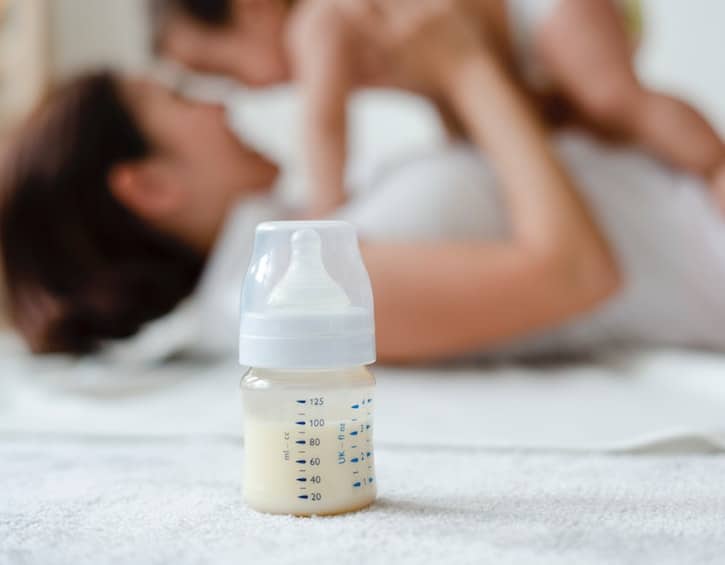
Pumps And Bottles
Lactation consultants generally advise waiting until breastfeeding is well established – usually around four weeks – before introducing a bottle feed (it is still possible to syringe or cup feed express milk before this) to avoid nipple confusion as mentioned previously. A less talked about issue is that some babies refuse the bottle completely, particularly if it is introduced after eight weeks, so women on limited maternity leave should keep in mind that there are little ones that need to be coaxed to take milk from anything other than the breast.
It’s not unusual to need to try an array of bottles before baby settles on a favourite, with brands including Pigeon, Dr Brown’s, Avent, Nuk, and Mam regularly featuring on “must buy” lists. Newer companies, claiming to offer items that better mimic a mother’s breast and nipple, include Nanobebe, Comotomo, and Olababy. Once baby has settled on an acceptable option, invest in a few, as it will be easier to match parts after sterilisation.
It’s important to spend time researching pumps, as there’s a vast range on the market, catering to different needs. Medela, Spectra, and Youha are the “big names”, offering everything from hospital grade to travel options. Mothers that will be intensively pumping and away from baby for much of the day or night (perhaps with work or other engagements) should invest in more powerful machines such as the Medela Symphony and Spectra S1 and S2 (which are available for use in some of Hong Kong’s public hospitals) even if they are more cumbersome to transport to the office. A dual pump and hands-free pumping bras are also valuable time savers. It’s a big initial financial outlay but worth it to make the best use of time, and to protect milk supply.
There are plenty of options for milk storage bags, but Wean Green and Life Factory offer environmentally-friendly storage options. Industrial pumpers may need to invest in a small milk fridge (which can later be converted into a wine fridge!). For those that pump less frequently, there are lighter, portable styles such as the Spectra S9 that can fit neatly into a handbag but be warned they have far less power. Women who prefer a manual option should try the Haakaa silicone pump, which enables simultaneous nursing and pumping, though it is worth assessing its long term value as some have found the suction fades over time.
Getting Outside*
Going out for the first time solo can be daunting but one of the great benefits of breastfeeding is that we are already carrying what we need in terms of equipment and nourishment: breasts are the original zero-waste packaging and our milk is “on tap”! A structured baby carrier can make it easier to nurse discreetly but it’s best to have a few practice runs before heading out. It’s normal to feel self-conscious nursing in public in the beginning, breastfeeding may be the biological norm but society has forgotten that. Take a deep breath, focus on meeting the baby’s needs, and remember Hong Kong (like most big cities) is full of smartphone zombies that rarely look up. Don’t worry about what anyone else is doing or thinking.
Breastfeeding advocates worldwide are campaigning for women to be able to nurse unfettered but to cover or not remains a personal choice. There are an array of firms selling beautiful nursing covers, but it is worth keeping in mind, not all babies comply. For those that feel uncomfortable nursing out in the open, or cannot find a suitable perch in Hong Kong’s seatless malls, then there are some excellent nursing rooms around. The IFC, Pacific Place, The Landmark, Elements, Lee Gardens, and Harbour City are among the popular ones offering clean, comfortable, and well-designed rooms that cater to most new mother’s needs. Little Monkey, the first directory of child-friendly facilities in Hong Kong, is an absolute gem that’s a must for any parents’ online favourites list. Founder Chhin Lee has even created a dedicated Nursing And Changing Rooms button to help speed up the search (available in English and Cantonese). The government also has a helpful list of its baby care options in public buildings.
*Editor’s Note: The situation in Hong Kong due to the coronavirus is constantly evolving and so restrictions are in place for many establishments. Please make sure you follow the latest government advice on social distancing and stay home if you have recently travelled overseas, have interacted with anyone who has been away, or display any symptoms. Your family’s health is the top priority!
Read more: Breast Pumps: Which One Is Right For You And Baby?
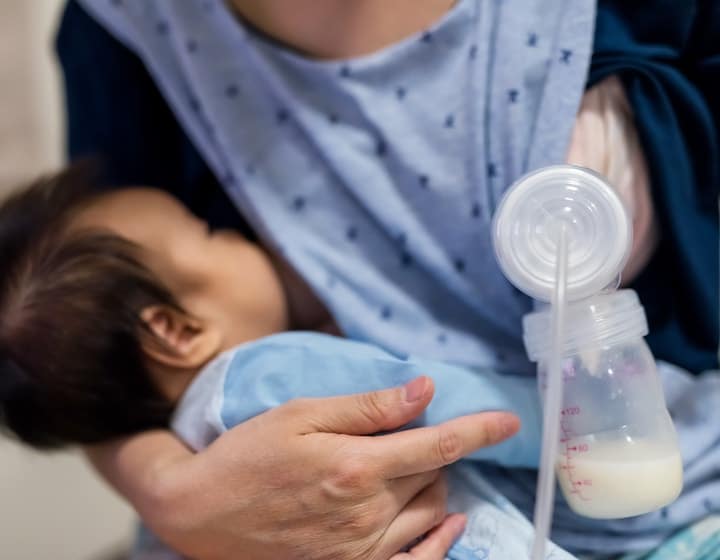
Returning To Work
Paid maternity leave in Hong Kong is woefully short, currently set at 10 weeks (though that’s changing soon hopefully!), and many women return to work before they are really emotionally, or physically ready. Financial realities can mean there’s no way of avoiding that, but being prepared can help. Companies are rarely set up to consider nursing needs so the first step is to have a frank discussion of what those are. Be firm and unapologetic about requirements with senior or HR managers, and if necessary highlight the government recommendations listed below. There’s no legislation in place to insist on it, but these guidelines indicate authorities want firms to:
![]() Allow lactation breaks (about two 30-minute breaks during an eight-hour shift) for expressing breast milk for at least one year after childbirth, and to adopt a flexible approach thereafter.
Allow lactation breaks (about two 30-minute breaks during an eight-hour shift) for expressing breast milk for at least one year after childbirth, and to adopt a flexible approach thereafter.
![]() Provide a space with privacy, an appropriate chair, a table and an electrical socket for connecting pumps.
Provide a space with privacy, an appropriate chair, a table and an electrical socket for connecting pumps.
![]() Provide a refrigerator for storing breast milk (a pantry refrigerator will do).
Provide a refrigerator for storing breast milk (a pantry refrigerator will do).
Do not accept any suggestions to pump in the bathroom, storerooms, or anywhere that could be unsanitary. The wider world is not pumping savvy, so colleagues can be a challenge. Some will be disgusted by the idea, others irritated because they believe pumping breaks are “extra free time”, while a few may even be fearful that breast milk will contaminate their lunch if it’s placed in the communal fridge. Keep in mind that these are the idiotic responses of the ill-informed and try to practise the art of being polite but not giving a damn. Seek out support from women in the same situation as it can be an invaluable boost on days when pump parts are forgotten and there is crying over spilt milk (literally). Take heart that there are many working women in the same position, and each step taken to normalise pumping now makes the path so much easier for the next generation.
Breastfeeding Older Babies
There seems to be an arbitrary time period (around three months) where breastfeeding is commended and accepted. But around the four-month sleep regression stage, when a new mother’s sanity is pushed to the limit, is the precise point that the insidious undermining begins. This is the time where questions about sleep, size, and schedules, always seem to be answered with the word “formula” instead of helpful advice to help continue the nursing journey. Despite the World Health Organisation (WHO) recommending exclusively breastfeeding for at least six months, and as part of a mixed diet to aged two and beyond, this is regarded as strange behaviour. Six months is usually the age when, inexplicably, people talk about the need to encourage independence, and once bub passes their first birthday, then mothers who continue to nurse are accused of “only doing it for themselves.” Those that breastfeed beyond two years are often regarded as curiosities.
It is wonderful that support at the newborn stage is slowly becoming the new normal, but we should be celebrating every milestone and every hurdle that nursing mothers meet up until the weaning age that suits them. Breastmilk retains all the nutritional value it always had no matter how long you choose to nurse. But even if it didn’t, that’s still no reason to stop as breastfeeding and breast milk still offer immunological, emotional, and developmental benefits. The age range for natural term weaning in humans is actually anywhere between aged two and aged seven.
For those that want to continue, it is vital to find like-minded souls to help navigate the challenges at home, and in wider society. Breastfeeding Older Babies and Beyond is an excellent and well-moderated group where you will find mothers dedicated to natural term weaning and where nursing to age three or four is the norm. If you’re looking at fertility treatment and want to continue breastfeeding, this group on Facebook comes highly recommended, and there is also a dedicated group for those already pregnant, or who have multiple children and want to tandem nurse. The #Ittasteslikelove campaign aims to normalise natural term breastfeeding, encouraging women to nurse their children – of any age, however, wherever and whenever they need to. Join the campaign by sharing your best-loved breastfeeding pictures with the #Ittasteslikelove hashtag on Facebook and Instagram.
Read more: Going Back To Work After Having A Baby: Advice From A Hong Kong Mama
Editor’s Note: This post was originally published on 28, May 2019 and updated on 31, July 2020.
This is part of a special series, “SassyMama Supports World Breastfeeding Week, in partnership with Gleneagles Hospital Hong Kong“. For more posts on breastfeeding in Hong Kong, click here.
 View All
View All
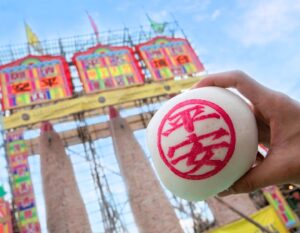



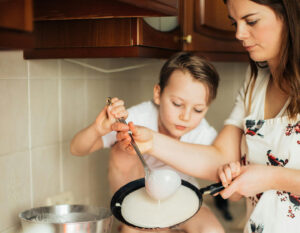






 View All
View All




 View All
View All


 View All
View All
